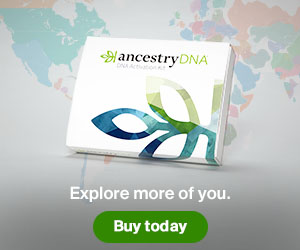There are literally billions and billions of genealogical records now readily available online. From the big databases of paid subscription websites like Ancestry and MyHeritage, to the diverse collections of FamilySearch and hundreds of other totally free efforts– information about our forefathers’ lives are more accessible than ever.
And each and every single among the these collections is essential– whether the database contains one record or a billion. But have you ever questioned what the largest collections on the internet are, and who uses them? Let’s have some fun and have a look.
Why is This Information Important?

In our short article, This May Be the Most Important Genealogy Research Trick You Ever Learn, we discuss the importance of accessing private databases in your research study– rather than general searches that try and sort through numerous collections.
Using private collections allows you to improve your searches in new ways and use many search and browse strategies to optimize your efforts. By increasing your familiarity of different online collections you improve your possibilities of locating the information you need. See the pointers and linked short articles listed below the list for more assistance.
Please keep in mind that we have actually partnered with some of the websites on this list to provide you with info about their services and may earn a cost to support our work if you pick to subscribe after following a link on our page.
How Did We Come Up With This List?
To figure out the largest record collections online we looked at the brochures of the leading 4 genealogy research websites– FamilySearch, Ancestry, MyHeritage and Findmypast. Every one of the databases below originates from one of these sites. Some of these collections appear as exact or almost precise duplicates on more than one site and we have actually kept in mind where that is the case. For collections that are comparable, but not the very same, we have listed them separately.
Lots of websites bring the very same databases but the number of records shown differs. In other cases, it may be that some records were avoided or duplicated or that some sites may have an older version of a database or may have integrated the records with other collections.
Record numbers in general can be confusing and rather deceptive in the beginning look. When we hear 100 million records, what do we believe? 100 million pages of information? 100 million names? A record is an entry that contains unique details about an individual. For instance, in the census– each line is considered a record– not each page.
We have actually left out from this list member family trees, recent phone and address directory sites, collections consisting of ONLY records after the year 2000, and public record databases no matter where they are held. Although they are frequently the largest collections, their precision, information or worth to scientists is simply not on par with the other selections on this list.
While we have excluded ancestral tree themselves considering that the details can typically be unreliable, we have included some databases originated from ancestral tree, such as Ancestry’s Member Photos and Scanned Documents, given that these types of records are so special and valuable.Is it possible that there are bigger databases on other genealogy sites that do not appear here?
We selected these four sites to base this short article on since they focus on records dedicated to genealogical research (with associated search functions and tools), they separate their records by topic and plainly mention the number of records in each different collection. This is not true for numerous other sites so it is nearly difficult to determine record counts.
The 20 Largest Genealogy Collections on the Web
The top databases online by records number are shown listed below. To see the full selection of records from each website please visit the online catalogs of FamilySearch, Ancestry, MyHeritage and Findmypast.
A few of the databases are free and some are on paid websites but are provided at no cost (such as the 1940 census). Other databases need paid access. If you are hoping to access records on a site you do not have a subscription to you can check out this post about securing free access through your library or you can utilize the complimentary trials noted below.

Leave a Reply